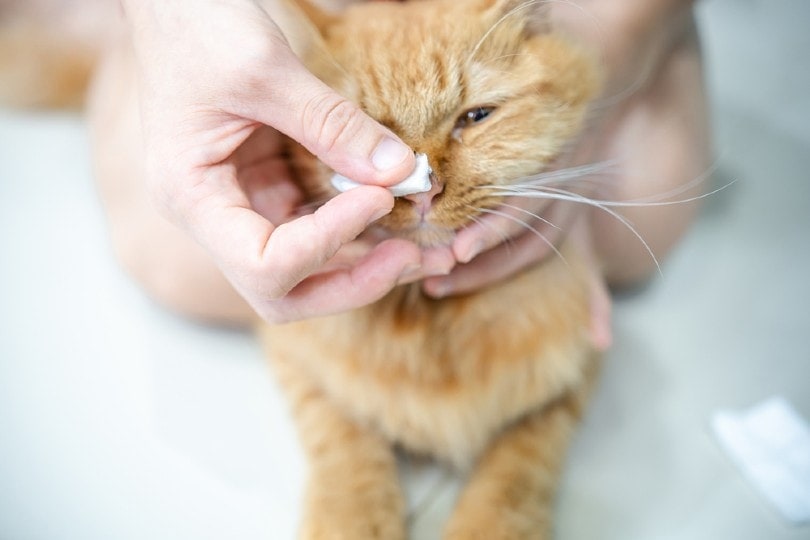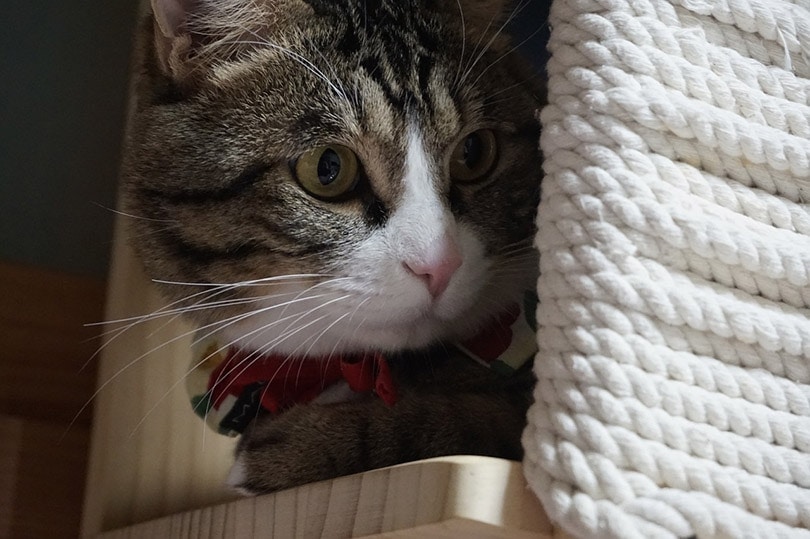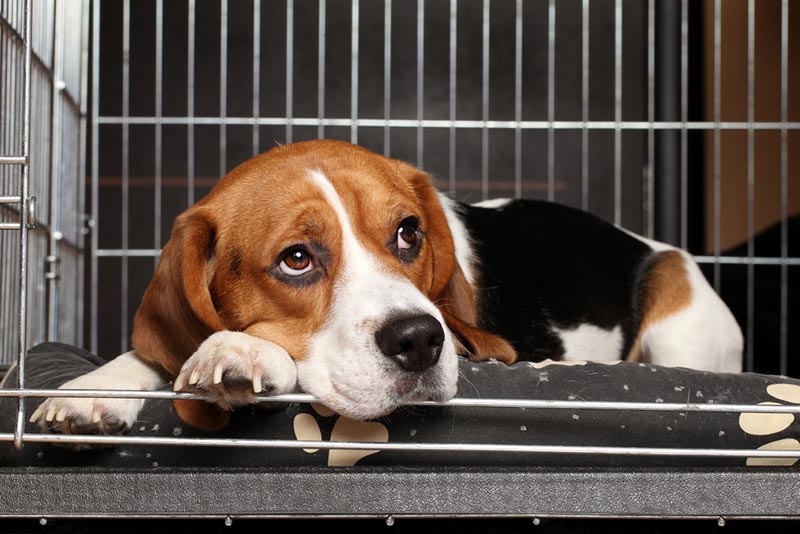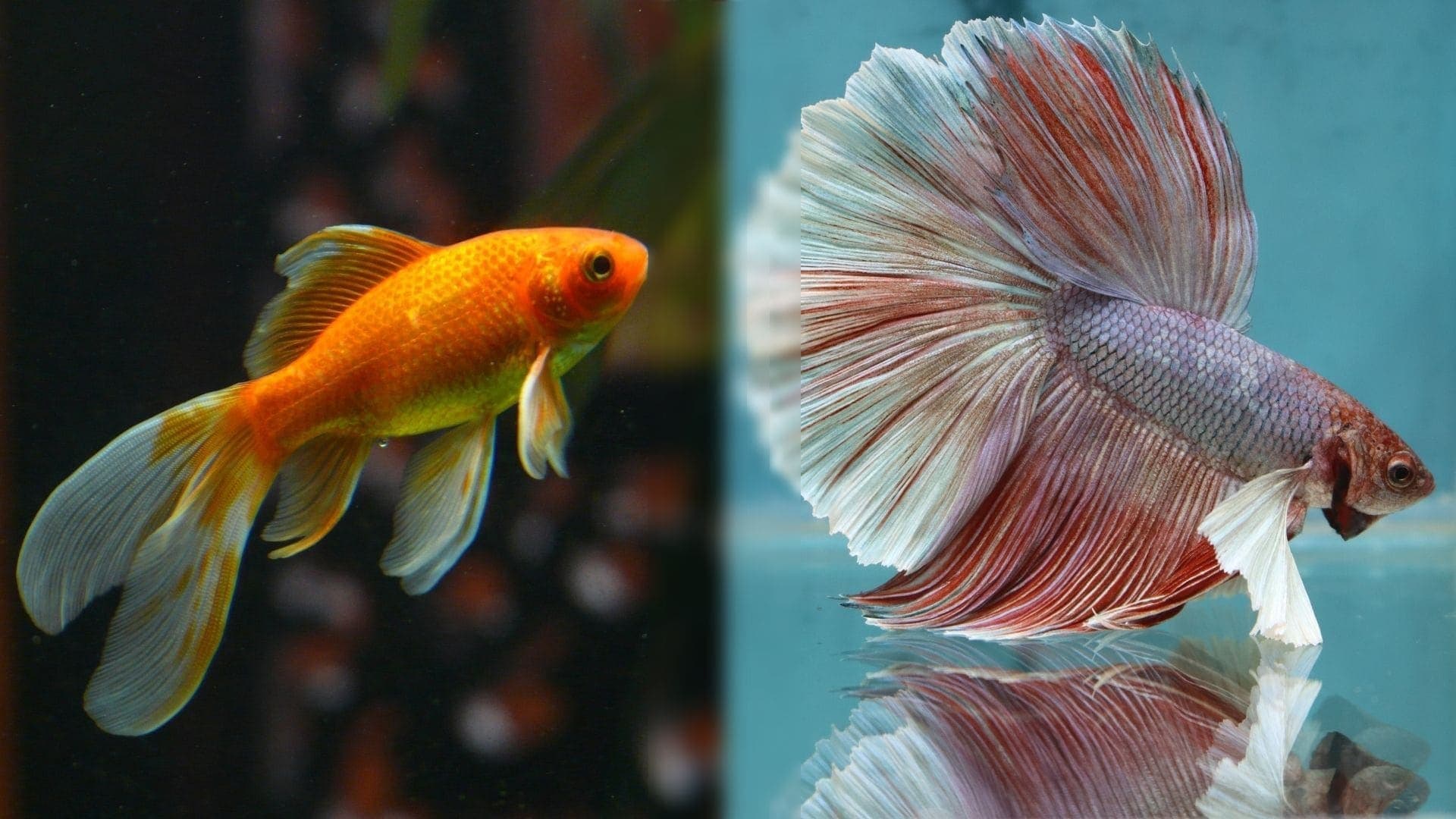How Many Kittens Are in a Litter? Vet Reviewed Litter Size & Stages of Pregnancy
Updated on
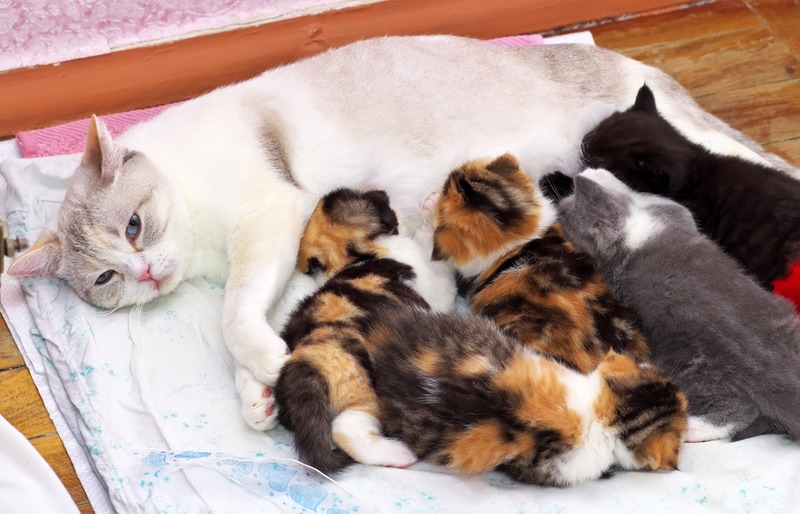
Click to Skip Ahead
If your fur baby is pregnant, it’s only natural for you to want to research every step in the process. Educating yourself on how to best care for your pregnant cat and her kittens will ensure that everything goes smoothly when the time of their arrival comes. Knowing how many kittens are on their way will help you get all the supplies you need—and it may help calm your nerves. Thankfully, cat litter sizes are generally manageable, with an average of 4–6 kittens per litter.
However, there are factors that affect the size of a cat’s litter, such as age, size, breed, and health. Other times, the litter size is unpredictable, which happened in the case of a Burmese/Siamese mix, who had a litter size of an astounding 19 kittens1! But don’t worry, this is the largest litter of kittens ever recorded, so you can expect a much smaller size from your cat.
What Affects Litter Size?
Several factors can affect the size of a cat’s litter, although not by much. First-time moms or young mothers tend to have smaller litters of 2 to 3 kittens. This can also be the case with older cats.
Certain breeds, such as the Burmese, often have larger litters than other breeds. However, if a kitten was born in a large litter, they are likely to produce a large litter, too.
Health plays a big role, too. Healthy cats tend to have larger litters that are carried to term, while malnourished or cats in poor health will often experience miscarriages or stillbirths.
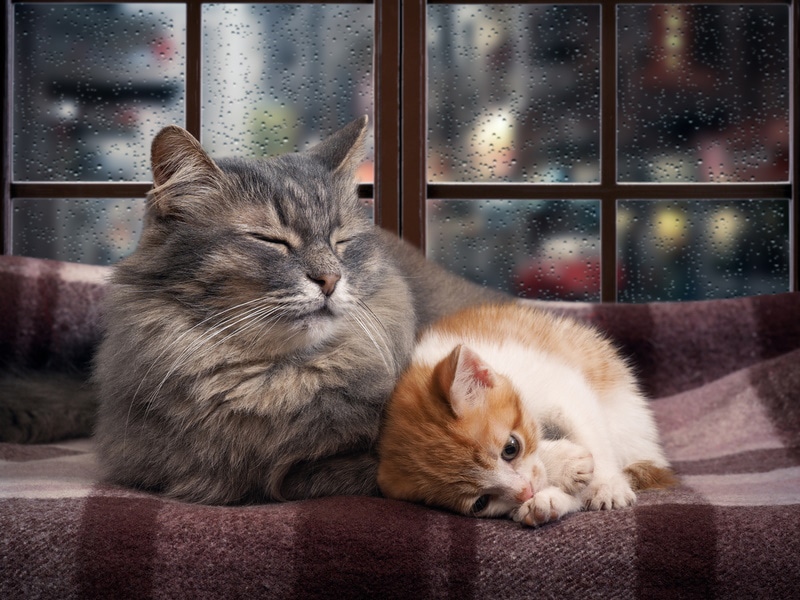
At What Age Can a Cat Reproduce?
Cats can reproduce as soon as they start having heat cycles, which usually begin at around 6 months of age but can begin as early as 4 months. If not mated they will continue to go into heat every 2–3 weeks for a few days during the mating season. Indoor cats are less likely to fall pregnant, but they could escape. Therefore, the only way to confidently prevent an unwanted pregnancy is to neuter your cat. This surgery is often done before they come into heat at around 5 months of age, but you should discuss the timing of spaying with your vet.
You’ll know your unneutered cat is in heat when their behavior changes, and they start to become very vocal, restless, and affectionate. She’ll also try her best to escape to attract and mate with a male cat, and she may spray urine and present her rear.
Cats can mate with multiple tom cats during one heat cycle and can produce a litter of kittens that don’t all share the same father.
How Long Are Cats Pregnant For?
Unlike humans, who are pregnant for more than 9 months, cats are only pregnant for around 9 weeks. They also have three trimesters, with each trimester consisting of around 20 days.
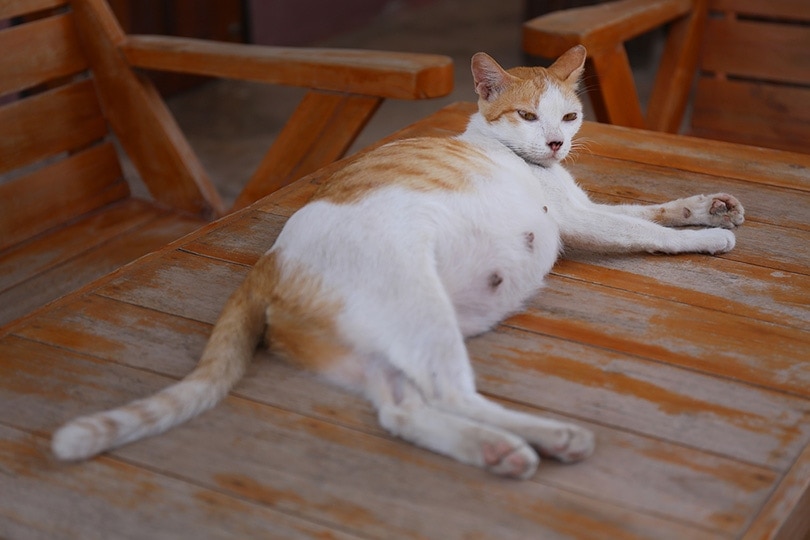
How to Tell If Your Cat Is Pregnant
Although you may not be able to tell if your cat is pregnant or not early on, it becomes very obvious as time goes on. One of the earliest signs are enlarged, red nipples.
As time goes on, you’ll notice an increase in their appetite, weight gain, increased affection, a swollen abdomen, and signs of nesting. However, to get an idea of how far along your cat is, you’ll need to take her to the vet for a proper diagnosis.
It may not be necessary to take your cat for a pregnancy diagnosis if they’ve been for a recent health checkup. However, you can take them to the vet if you want to know roughly how far along the pregnancy is, an idea of how many kittens she is carrying, how she’s doing health-wise, and to get answers to any questions you may have.
How Do Vets Diagnose Cat Pregnancies?
Apart from the obvious signs, vets can diagnose cat pregnancies, as well as give you an estimation of how far along they are and roughly how many kittens they are carrying through three different methods.
The vet may examine your cat’s stomach by touching the area to feel around for the fetuses. This can be done as early as 3-4 weeks into your cat’s pregnancy.
Another method is through an ultrasound scan, which can usually be done around 3-4 weeks into the pregnancy. Your vet may be able to give you an idea of how many kittens there are but it is not always possible to be exact.
X-rays can also be done from around 6 weeks of pregnancy, once the kittens’ skeletons have developed. X-rays are better at showing the number of kittens there are but can require sedation or an anesthetic to take.
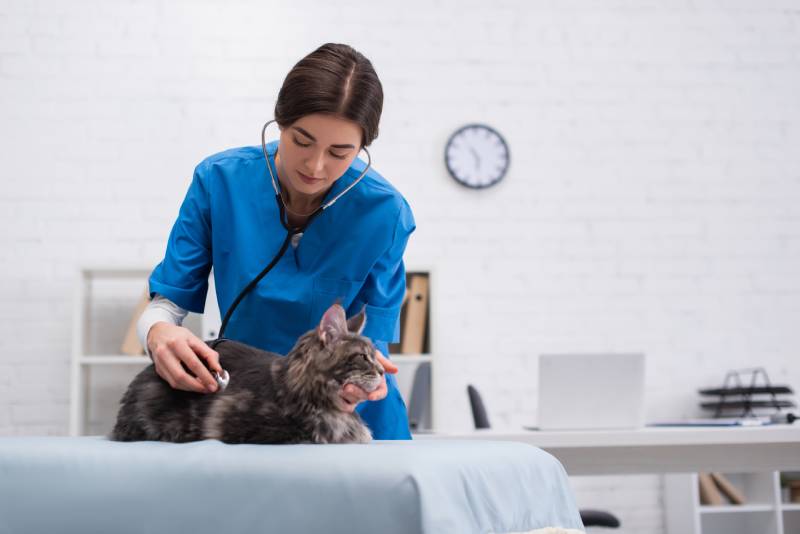
How Will I Know My Cat Is in Labor?
Cats are usually able to give birth on their own without any issues. However, it is important to keep an eye on her during the process to make sure nothing goes wrong. To ensure that she delivers her kittens in a safe, warm, comfortable, and observable spot, set up a birthing nest for her in a quiet and private area. It doesn’t need to be anything fancy—a cardboard box with an easy access point and some old towels are all she’ll need.
Be sure to set up this area a few weeks before your cat is expected to go into labor so that she doesn’t go off to find her own birthing spot. Once the big day arrives, it’s important for you and your cat to feel relaxed and ready to welcome her sweet kittens into the world, even though it’ll be at a distance for you.
- Spending more time in and around the birthing nest
- Pacing around restlessly
- Meowing, yowling, and whimpering
- Excessive licking of their vulva
- Loss of appetite
- Straining
Give your cat space to go through this process naturally, and only get involved if you see any complications. Once your cat starts giving birth, obvious straining and strong contractions will begin. The first kitten is usually born within 30 minutes of straining and other kittens come every 10-60 minutes. Contact your vet if your cat has been straining for 20-30 minutes without a kitten being born or if you have any other concerns.

What to Expect Once the Kittens Are Born
When the kittens are born, they’ll be solely dependent on their mother for warmth, feeding, and grooming. They’ll be tiny, blind, toothless, and deaf but will develop quickly.
By 4 weeks of age, these kittens will be able to hear and see and will have developed a few teeth. By 8 weeks, they’ll have all their baby teeth, fully developed vision and hearing, be eating kitten food, and be able to run and climb. In just 2 months, these kittens will go from helpless to fully independent.
Conclusion
Although 9 weeks can feel like a very long time when you’re an expectant parent of a soon-to-be mother cat, it all goes by so quickly, and those bundles of joy will be here before you know it.
Most first-time moms have litters of 2–3 kittens, but the average litter size is 4–6 kittens. Breed, age, and health are factors that affect the size of the litter, with purebred healthy adult cats producing the largest litter sizes. Although signs of pregnancy will become obvious as time goes on, you can take your cat to the vet to confirm pregnancy and for advice.
Featured Image Credit: ESOlex, Shutterstock


